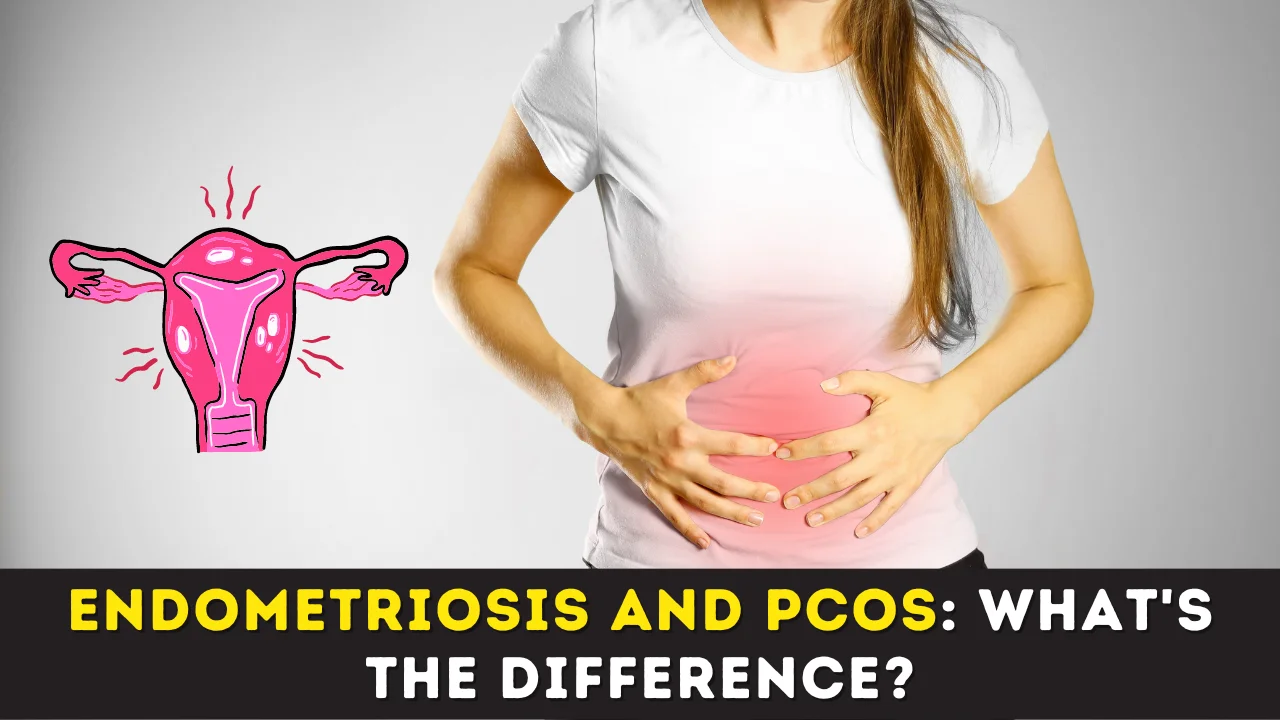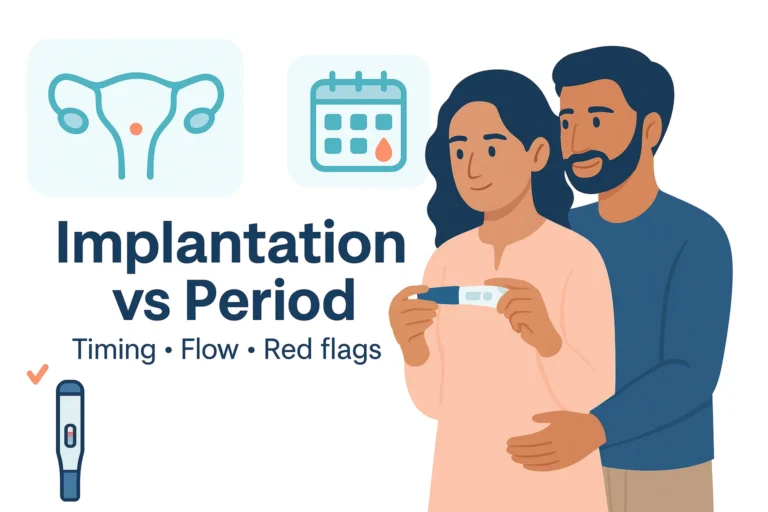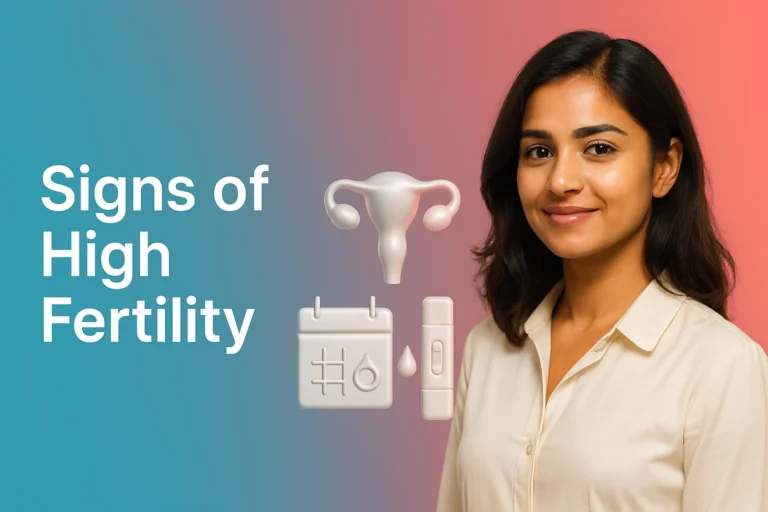Endometriosis and PCOS are both common disorders in women. Endometriosis and PCOS are primarily conditions that affect the female reproductive organs. Endometriosis can affect the ovaries, uterus, and other organs such as the bladder and intestines, whereas PCOS only affects the ovaries.
According to a 2018 study, endometriosis affects 70 percent of women who experience frequent pelvic discomfort. It is estimated that this problem occurs in 10 to 15% of women. According to a 2017 study, 5 to 20 percent of women of reproductive age have PCOS.

Endometriosis Vs. PCOS
Even though the symptoms of endometriosis and PCOS are similar, they are two different diseases. While PCOS is a metabolic condition, endometriosis causes persistent pelvic pain.
What is PCOS?

Women whose ovaries produce excessive androgens, or male sex hormones, have a condition called polycystic ovarian syndrome. Small, fluid-filled follicles also begin to form around the eggs in the ovaries of these women. Women of all ages can develop PCOS, although women ages 15 to 45 are most likely to develop it.
What is endometriosis?

A condition known as endometriosis can result in the endometrium, the tissue that lines a woman’s uterus, growing outside the uterus. The lining of a woman’s pelvic cavity, fallopian tubes, and ovaries can be affected by this endometrial tissue. For some women, the disease can be crippling and cause severe pain.
What are the symptoms of endometriosis and PCOS?
Both PCOS and endometriosis have some similar symptoms, such as excessive bleeding and trouble getting pregnant. However, most symptoms vary.
| PCOS | Endometriosis |
|---|---|
| Heavy bleeding | Heavy bleeding |
| Irregular periods | Bleeding between periods |
| Missing periods | Difficulty conceiving |
| Pelvic pain | Pelvic pain before menstruation |
| Excess body hair | Pain during or after sex |
| Hair fall on the head | Pain during urination or defecation |
| Difficulty conceiving | Digestive problems |
| Acne | Tiredness |
| Oily skin | Low energy |
| Dark, thick skin | |
| Weight gain | Hair falls on the head |
| Bleeding without ovulation |
Sometimes, these disorders may exist without any symptoms. Symptoms can sometimes be vague or misdiagnosed.
What are the causes of endometriosis and PCOS?
The exact causes of endometriosis and PCOS are not fully understood by medical professionals. However, researchers have discovered some possible causes.
PCOS
Insulin resistance: Both obese and lean PCOS share common symptoms of insulin resistance. It occurs in 70–95% of obese PCOS patients and 30–75% of lean PCOS patients.
Hormonal imbalance: High amounts of several hormones, including testosterone, can aggravate PCOS.
Endometriosis
Retrograde menstruation: In retrograde menstruation, shed tissue reaches the pelvic cavity through the fallopian tube, sticks to the tissue there, and forms ectopic endometriosis lesions.
Weakened immune system: Endometriosis can appear in people with immune system problems or a weakened immune system.
The lymphatic or vascular system spread: Endometrial transit through the lymphatic system may be possible if shed endometrium is transplanted into ectopic areas.
Coelomic metaplasia: The mesothelial layer of the peritoneum of the intestine and stomach contains specialized cells that undergo metaplasia and give rise to endometriosis.
Surgery: Endometrial tissue may move inadvertently during certain surgical procedures, such as cesarean (C-section) or hysterectomy.
What are the risk factors for endometriosis and PCOS?
| PCOS | Endometriosis |
|---|---|
| Family history of PCOS | Family history of endometriosis |
| Diabetes | Onset of menstruation before the age of 11 years |
| Sudden weight gain | Infertility |
| Being obese or overweight | The onset of menstruation before the age of 11 years |
| A menstrual cycle lasts less than 27 days |
How to Diagnose Endometriosis and PCOS?
Several tests are necessary to confirm the diagnosis of PCOS and endometriosis.

PCOS
- Pelvic exam: Using this exam, the doctor can check for cysts or lesions behind the uterus.
- Medical history: If any of your family members have PCOS, your doctor will inquire about those issues as well.
- Ultrasound: Your uterus and ovaries can be seen with ultrasound technology to check for cysts.
- Blood tests: Blood tests that show abnormally high inflammation marker readings may be a sign of PCOS.
Endometriosis
- Pelvic exam: Using this exam, the doctor can check for cysts or lesions behind the uterus.
- Imaging tests: Because MRI can help detect small spots of endometriosis, especially around the bowel and pelvic ligaments, it is often used in combination with pelvic ultrasound.
- Blood test: A blood test known as CA125 test measures the level of CA125 blood protein in the blood, which is also used to identify a specific protein present in the blood of women affected with endometriosis.
- Laparoscopy: A surgical technique known as laparoscopy enables a physician to access the abdomen and pelvis from the inside without making significant incisions in the skin.
- Medical history: If a member of your family has endometriosis, your doctor will inquire about those issues as well.
Can you have PCOS and endometriosis at the same time?
Yes, it is possible to have both PCOS and endometriosis together. According to a 2015 study, a diagnosis of endometriosis is more common in women with PCOS.
Doctors believe that when a woman has endometriosis and PCOS at the same time, excess androgens and insulin, resulting in excess estradiol, are responsible. When levels of the hormone estradiol increase, women are more likely to develop endometriosis.
How to Treat Endometriosis and PCOS?
For people who have endometriosis or PCOS, medications, surgery, and lifestyle changes can reduce their symptoms and increase their quality of life.
| PCOS | Endometriosis |
|---|---|
| Medicine | Hormonal birth control |
| Lifestyle changes | Pain medication |
| Hormonal birth control | Surgical removal of tissue |
| Take weight management | Lifestyle changes |
Despite being distinct gynecological disorders, endometriosis and PCOS are both chronic and challenging to treat.
When endometrial tissue leaves the uterus and damages other organs, endometriosis develops. However, PCOS manifests as multiple ovarian cysts and abnormally increased androgen levels.
Infertility and masculine characteristics are side effects of PCOS. PCOS and endometriosis are treated with medications, surgery, and lifestyle changes. Both conditions are treatable, but only through treatment.




